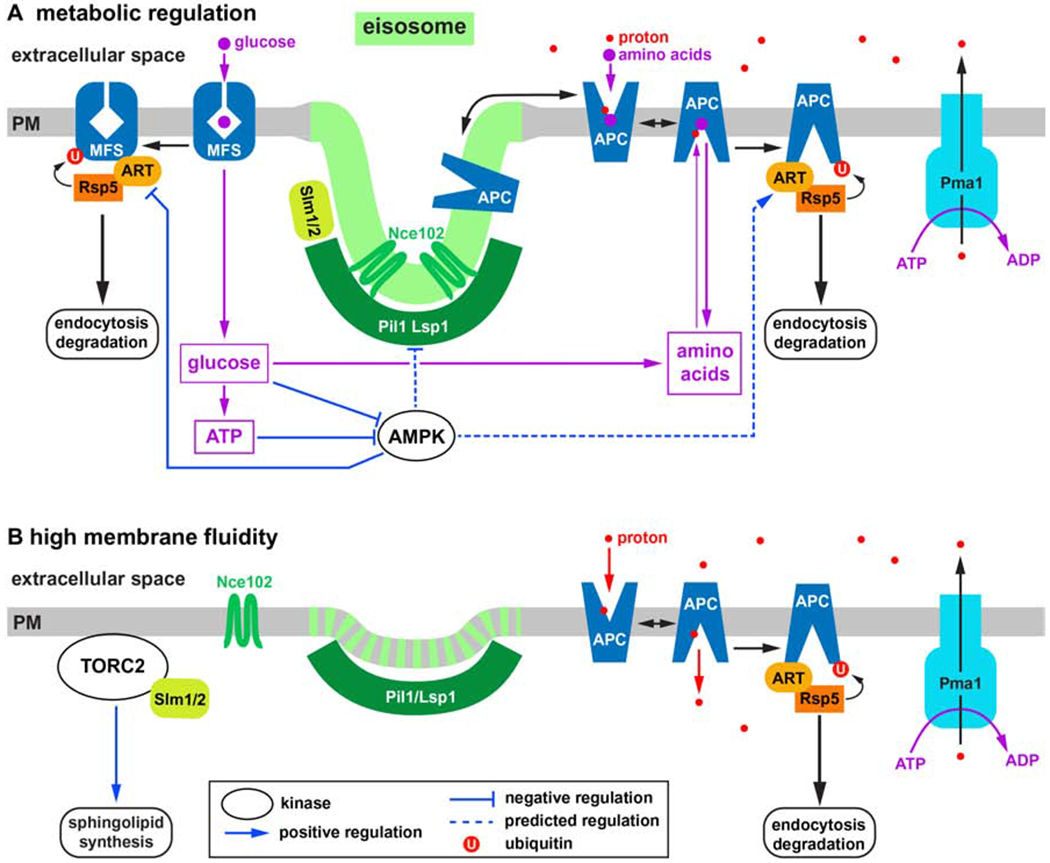Figure 1.

Model of APC transporter regulation (see Table 1 for descriptions of the various proteins). A) Cell surface expression of APC transporters is regulated by the metabolism of the cell. AMPK is activated by low energy levels which increases APC transporter downregulation by regulating eisosomes and ART adaptors. Furthermore, high nutrient levels (e.g. amino acids) cause APC transporter degradation by stabilizing the inward-open conformation of the corresponding transporter. Glucose transporters (MFS transporters) are not proton driven and are regulated by AMPK in opposite way compared to the APC transporters (low energy levels stabilize these transporters). B) Stress conditions such as heat-shock, hypoosmotic shock, high pH or the presence of hydrophilic compounds increase fluidity of the plasma membrane, which results in the disassembly of the eisosome membrane domain (eisosome flattening). As a result of high membrane fluidity, APC transporters are highly active (even in absence of substrate), resulting in efficient ubiquitination and degradation of these transporters. In addition, eisosome flattening activates the TORC2-mediated stress response pathway.
